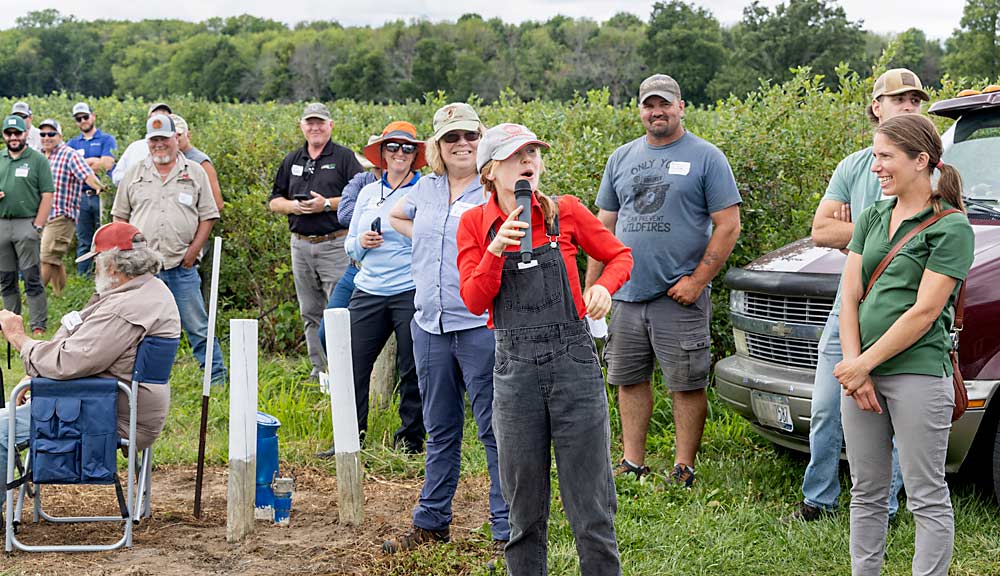
Anya Osatuke says more New York fruit growers are “blueberry curious” — thinking about planting blueberries or expanding their current plantings.
Osatuke, Cornell University’s Western New York small fruit extension specialist, discussed blueberries during Cornell’s Lake Ontario Fruit Program tour last summer. The tour spent most of the day visiting orchards but also stopped in a blueberry patch at Orchard Dale Fruit Co. in Waterport.
Better known for apples and grapes, New York doesn’t have clusters of large wholesale blueberry operations like its neighbor, New Jersey, or climate-comparable Michigan. New York blueberry farms are mostly small, direct-market operations scattered across the state, some tucked away in extremely remote corners. Cornell horticulture professor and small fruit specialist Marvin Pritts, who has been working with state berry growers for nearly four decades, said he’s still discovering blueberry farms he never knew about.
Despite its decentralized nature, New York’s blueberry industry is not a lightweight. Estimates vary, but there are probably about 1,500 acres of domesticated highbush blueberries in the state, grown on more than 800 farms.
“New York blueberries are quite strong, but they occupy the market in a different way than Michigan and New Jersey,” Osatuke said.
New York has a good climate for blueberries and lots of sandy, acidic soils — exactly what the fruit needs. Potential for expansion exists, but there are hurdles to overcome.
Hand labor is scarce these days, and it’s becoming more expensive due to the state’s changing overtime and minimum wage rules.
“I’m not sure how you make money doing large-scale blueberries at this point, not with labor costs in New York,” said Dale-Ila Riggs, who grows a small plot of U-pick blueberries.
Mechanical harvesters offer a potential alternative, but they’re expensive, too. Pritts knows a few growers who bought mechanical harvesters in the past, but eventually had to sell them. They require a lot of acres and volume, as well as a sorting line — in other words, a big investment.
New technologies and varieties are being developed for use in other states, and it takes New York growers “a little bit of finagling” to find things that work for them, Osatuke said. Their plantings of Bluecrop, Duke, Draper, Elliott and other varieties tend to be older and not as productive as newer commercial plantings in other states.
Proximity to the larger wholesale industries in New Jersey and Michigan makes it tough for New York’s small farms to break into the fresh wholesale market. Processing prices are low, too. Pritts doesn’t know anybody who processes blueberries, except into wine and some homemade jams and jellies, he said.
So, if New York blueberry growers are to expand, they might have to play to their strengths: agritourism and local sales.
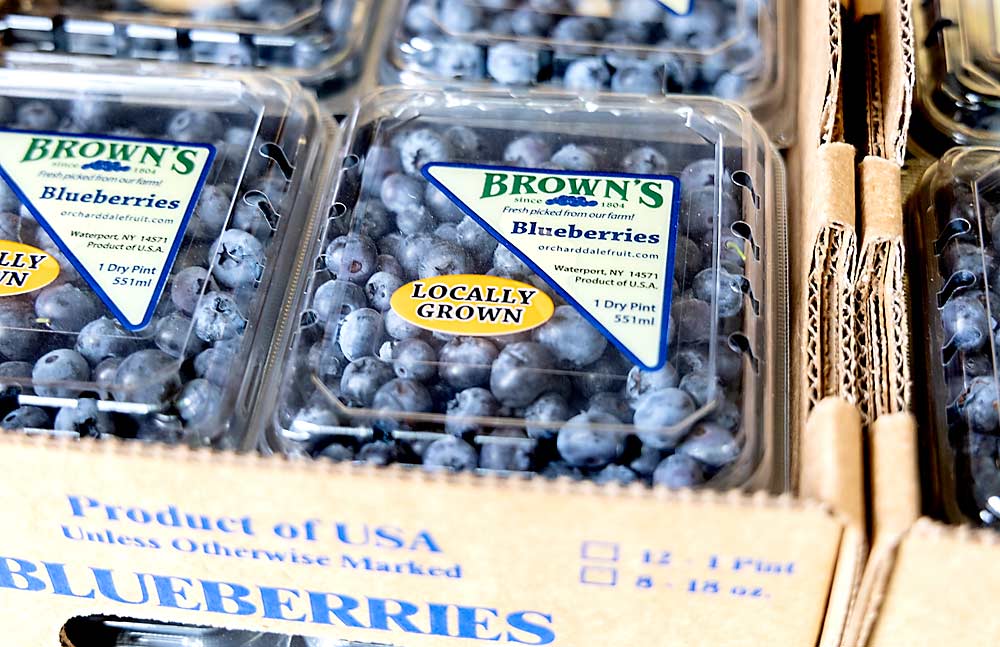
Eastern New York
Laura McDermott, Cornell’s small fruit specialist in Eastern New York, said there are many long-established, direct-market blueberry operations in the Hudson Valley. With easy access to generations of berry lovers in New York City and Albany, the state’s capital, the farm markets, U-pick patches and organic farms in the region have little need to expand into the wholesale market.
The region’s per-acre yield is comparatively low, and its topography and high land prices limit options for new plantings. To McDermott, it makes more sense for existing farms to increase production on their current acreage.
East of Albany, near the Massachusetts border, Dale-Ila Riggs and her husband, Don Miles, grow half an acre of U-pick blueberries, as well as other berries, vegetables and cut flowers. Covered with exclusion netting and meticulously managed, the blueberry planting yields 15,000 to 20,000 pounds per acre. They grow 19 varieties to extend the season and give customers plenty of choices, Riggs said.
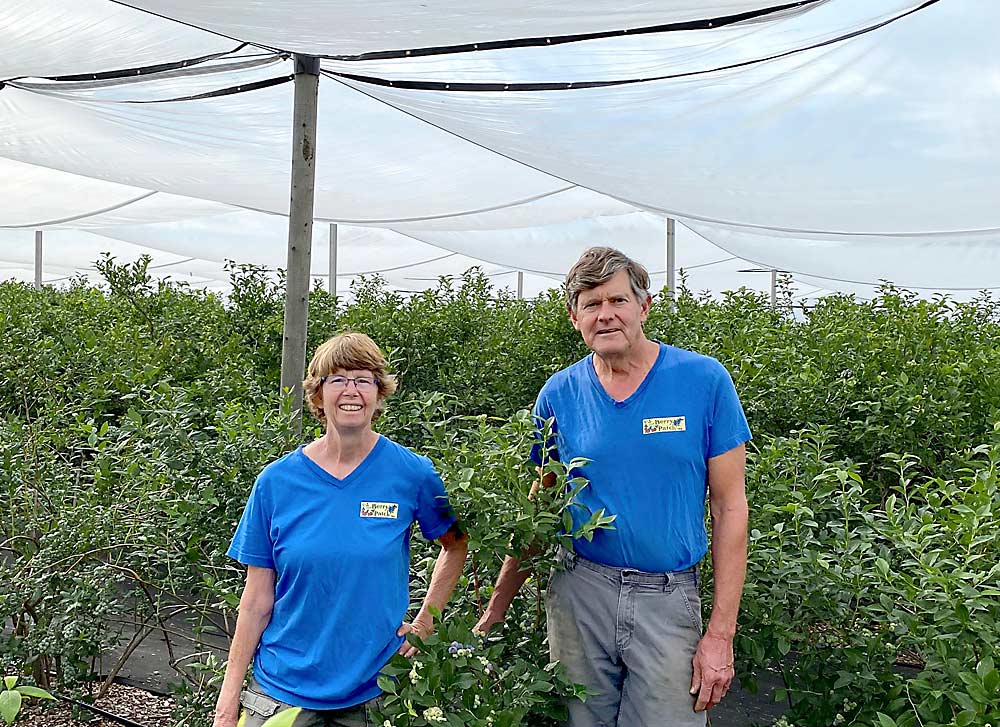
The netting protects their berries from birds and bad weather, but it mainly serves to exclude spotted wing drosophila, the invasive pest that’s become a major problem for New York blueberry growers in the past decade. SWD destroyed 45 percent of their berries the first year of infestation. The netting has reduced the infestation rate to zero. It’s also expanded U-pick sales: Customers like the double-door vestibule entry and zippered doorways, she said.
Western New York
Western New York has fewer people but more available land. If there’s room in the state for blueberry farms to expand, it’s probably there. But, growers are reluctant to expand without new markets, and the cost of labor always looms.
With nearly 40 acres, Burdick Blueberries, a U-pick operation in Cattaraugus, might be the largest blueberry farm in New York. The family owners have been growing blueberries on their well-drained, acidic soils since 1955. They’re more focused on renovating current plantings than expanding right now. The agritourism approach is working well for them, said manager Beth Strasser.
Closer to Lake Ontario, Orchard Dale Fruit Co., owned by the Brown family, is one of the few wholesale blueberry growers in the region. Although they grow 400 acres of apples, they grow only about 12 acres of blueberries and don’t plan to expand much beyond that, said grower Robert Brown.
Brown sells most of his berries (he also grows a dozen acres of strawberries) to local grocers that desire local fruit. He said the small fruit’s per-acre value competes with Honeycrisp, but rising labor costs and limited markets have kept the growth of his berry plantings to a minimum.
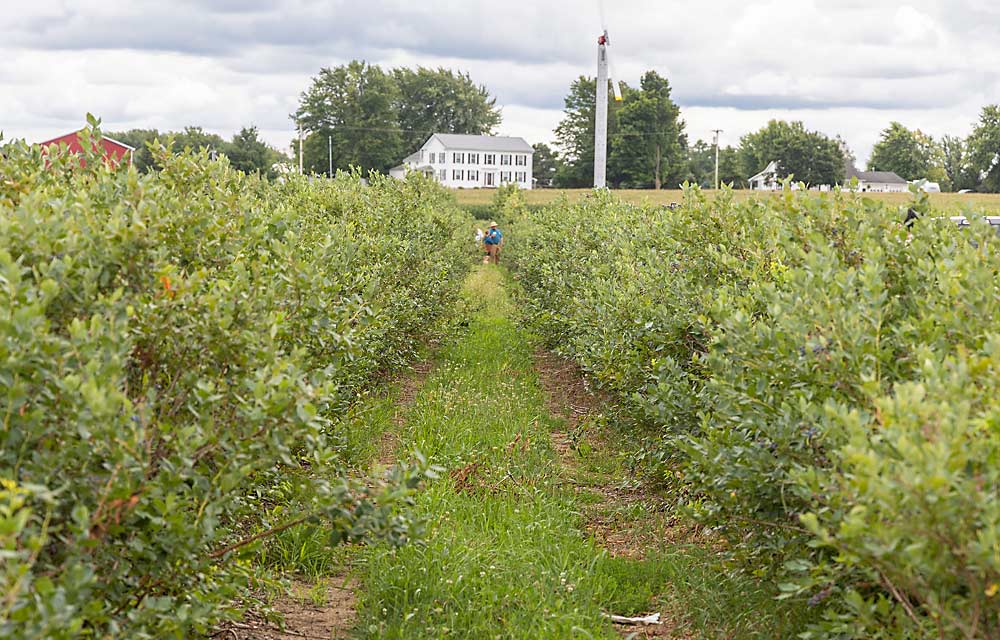
On top of that, blueberries are a challenging crop to grow. Brown has to apply wood chips, sawdust and sulfur to his soil to keep the pH down. He had to develop a special chemical program to combat SWD. His H-2A workers hand harvest and field pack the berries in plastic clamshells.
He has considered netting his blueberries but does not think it’s scalable. He has also considered buying a mechanical harvester, but he worries it might lower fruit quality and volume. Mechanical harvest would also require a packing line. The market just isn’t there for that kind of investment, he said.
—by Matt Milkovich

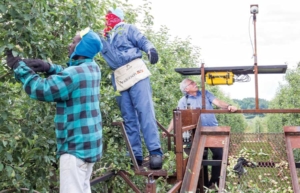
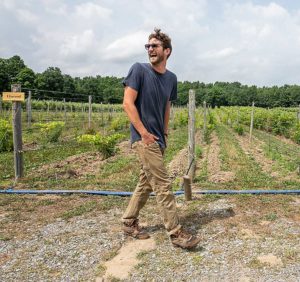





Leave A Comment